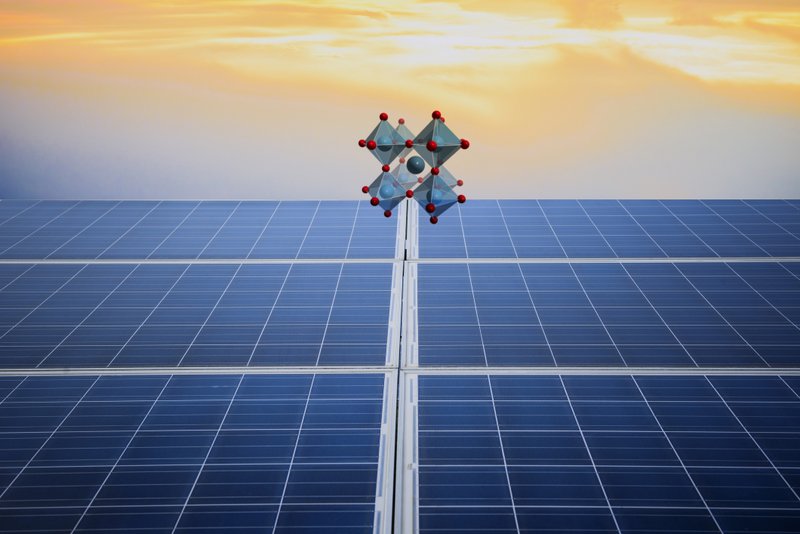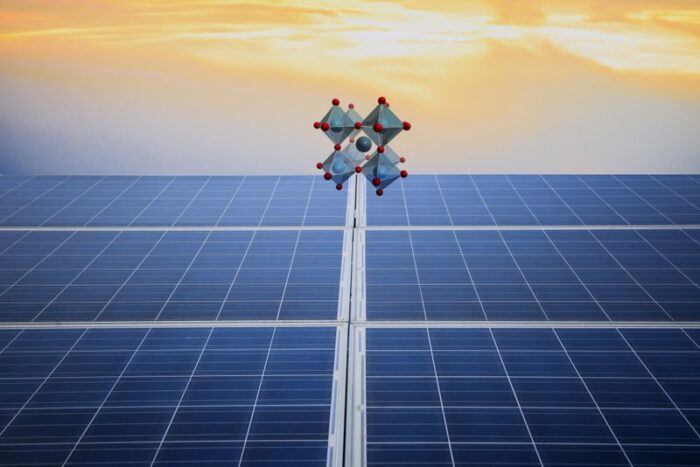
May 14, 2025


So-called “tandem” solar PV is likely to provide the next step-change in solar module power production. Tandem solar involves pairing perovskite cells with standard silicon cells. Perovskite tandem technology has theoretical efficiencies that could reach up to 43% and holds the potential to further reduce the cost of solar energy. One of the main challenges for commercialization that’s yet to be solved is the long-term stability or perovskite — but several module makers are getting closer and closer.
Qcells stress test and power measurement success
After announcing world-record efficiency for a commercially scalable perovskite/silicon tandem solar cell in December 2024, Qcells reported a successful stress test validation for its tandem modules, according to both IEC and UL certification standards. These tests also complied with tandem-specific requirements for power measurements, which they say is a first in the industry. The standard-compliant execution of the stress tests and measurements has been independently confirmed by TÜV Rheinland.
“To Qcells’ knowledge, this is the first report of tandem modules passing these stress tests, considering tandem-specific restrictions on power measurement, so this is truly a pivotal moment for tandem solar technology,” said Danielle Merfeld, Global Chief Technology Officer at Qcells. “Qcells’ breakthrough marks a critical step towards commercial readiness.”
The Qcells tandem module layers perovskite technology as a top cell, and Q.ANTUM silicon technology as a bottom cell. The stress tests include the UV preconditioning test for 15kWh/m2 (MQT10; UV15), thermal cycling test for 200 cycles (MQT11; TC200), humidity-freeze test for 10 cycles (MQT12; HF10), and damp heat test for 1000h (MQT13; DH1000).
”The tested cells and modules are typical devices from our R&D pilot line in Germany and have been fabricated by exclusively using processes that are feasible for mass production,” said Fabian Fertig, Head of Tandem R&D at Qcells Germany. “This result is laying the groundwork for future commercialization of this exciting technology.”
Trinasolar develops 800W tandem solar module
In collaboration with universities, Trinasolar has led numerous national perovskite research projects. The company has filed 331 patents related to tandem technology and has significantly improved conversion efficiency through advances in perovskite bulk doping, interface engineering, and composite layer design. This work has laid the foundation for the industrialization of perovskite/silicon tandem modules.
In April, Trinasolar said it has developed “the world’s first industrial-standard solar PV module delivering over 800W of maximum power.” This 3.1m2 module produced with 210mm x 105mm perovskite/silicon tandem solar cells and achieved peak power output of 808W, certified by the global testing, inspection, and certifying body TÜV SÜD.
“This is a monumental breakthrough for perovskite/silicon tandem solar modules and a key milestone in PV technology,” said Gao Jifan, Chairman and CEO of Trinasolar.
Tandem PV hires key executive as it looks to scale production


Tandem PV is a U.S.-based company looking to develop state-of-the-art perovskite-based solar panels for broad deployment. Tandem PV’s co-founder and CTO, Colin Bailie, developed the world’s first perovskite-silicon tandem solar cell at Stanford and launched the company through the DOE’s Activate accelerator. Tandem PV has raised $83 million from Eclipse, Constellation Energy, the Department of Energy, and others, and seems poised to start production.
Tandem PV announced the appointment of Clemens Hofbauer as Vice President of Manufacturing, who brings decades of industry expertise as the company begins scaling commercial production of its high-efficiency tandem solar panels, following its recent $50 million Series A funding round.
Clemens previously served as General Manager of SunPower’s solar module facility in Hillsboro, Oregon, and held senior leadership roles at SolarWorld, Silicor Materials, and Sila Nanotechnologies. His background includes overseeing operations in the U.S., Germany, Sweden, and Canada, and leading the development of a $1 billion solar silicon plant in Iceland.
Tandem PV is currently building out the manufacturing infrastructure needed to accelerate product commercialization and meet growing demand. The company’s proprietary solar panels combine thin-film perovskite with conventional silicon, generating up to 30% more power than standard panels.
Tags: Perovskite solar cells, QCells, TrinaSolar
Source link

